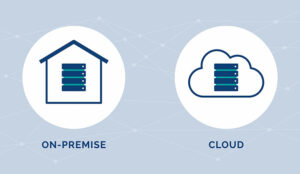With summer here and restrictions being lifted, you might be thinking a trip of some sort is in order. Once you figure out where you want to go, you’ll probably start taking a closer look at the best way to get there.
Planes, trains and automobiles are good options to get further, faster. But maybe you’re not looking for speed, and are more interested in a hiking, cycling or sailing journey that gives you more opportunities to enjoy the view along the way.
The concept of planning a journey is familiar to almost everyone. The task can be a little daunting for extended or complex, multi-stop trips, but in general, we understand how to get from here to there.
The same is not typically true for businesses that are planning their path to a cloud-based communications system. It’s generally accepted that all roads eventually lead to the cloud, but choosing the optimal path to get there is an unfamiliar task for most businesses. This is not a journey they’ve taken before, so the options to get from here to there aren’t inherently obvious.
The paths to the cloud are as diverse as the crisscrossed highways, railroads and airways you can take across the nation. Since each business is unique with its own personality and communications system requirements, the path to the cloud will be different for each business.
And it will be structured to meet the unique communications needs of the business along the way. Some organizations are unencumbered and can go directly to the cloud, while others may require a more scenic route.
While each business must follow its own path to the cloud, there are three key steps every business should take.
1. Assess Your Communications Needs for Today and Tomorrow
To help determine the right path to the cloud for your business, ask yourself the six questions below. The answers to these questions will help you develop a strategy for modernizing your communications systems that fits the way your business works today, and the way you would like it to work tomorrow.
- How do my employees collaborate?
- How does my organization handle customer interactions?
- Do our systems integrate well and do they improve efficiency?
- Are we taking advantage of our system by staying current with all the new features available, or are we behind on updates?
- Do we need to move to the cloud to improve efficiency, or can we do more with what we have?
- How are we prepared to harness cloud technologies when it’s time to make the move?
Don’t forget to update your modernization strategy as your requirements change. This will ensure your communications system continues to be a strategic asset that sharpens your competitive edge as your business grows.
2. Understand the Cloud Options Available
It’s important to remember that shifting your communications capabilities to the cloud is not an all or nothing decision. And there isn’t just one type of cloud. Understanding the basics of each approach to cloud communications will help you choose the right communications solutions at each stage of your journey:
- A public cloud is an online service that’s fully hosted and managed by a public cloud provider. It functions a bit like an apartment complex. Each business that rents cloud space has its own secure space within the larger infrastructure.
With a public cloud, you can easily add new communications features and functions whenever needed, and you don’t need to spend time or money installing, managing, maintaining or upgrading servers or other hardware on your own premises.
These benefits make public cloud a great option for small businesses and startups that don’t want to invest in full-scale network management and IT staff.
- A private cloud provides communications services within the confines of an internal, private network that’s protected from outside intrusion by a firewall, most likely your own company’s firewall.
A private cloud is the best option for companies where security is a major concern, because you have full control over who and what can access the information within your private cloud environment.
However, you do need to take on responsibility for detecting, protecting against and mitigating the risks associated with potential data breaches on the network.
- A hybrid cloud combines public and private cloud features to provide the best of both worlds: Security with scalability, and less complexity with more control.
A hybrid cloud is a good choice for businesses that want the benefits and control of a private cloud as well as the flexibility to deploy and manage unified communications applications and contact centre features in the way that makes the most sense for their business.
3. Choose a Technology Partner to Help Navigate the Way
While solo travel is definitely a trend, most journeys are smoother when you travel with a co-pilot who can help you navigate all of the twists and turns along the way. You’re even less likely to run into unexpected hurdles and delays when your travel partner has been to the destination before. Your journey to the cloud is no exception.
Working with a technology partner gives you access to trained experts who can help you smoothly navigate all the different paths to the cloud.
Your partner has a deep understanding of the pros and cons of the different cloud options and can recommend migration strategies and solutions based on where your business communications system is today, and where you need it to be tomorrow.
They’re fully prepared to answer your questions, and to partner closely with you throughout your journey to the cloud and beyond.
Here’s a very brief overview of some of the strategies and solutions a Mitel certified partner will discuss with you to simplify your journey to the cloud:
- A software assurance program that provides easy access to the latest communications capabilities, ensures software versions are always current and compatible and keeps security fixes up to date. Your communications system is proactively monitored for performance and remains standards compliant. And your teams have access to online training to help them work more efficiently.
- Applications and integrations that let you seamlessly add collaboration and contact center features and functions to your existing system.
- Subscription payment models that make it easier to get current and do more with existing systems, and to migrate to the cloud, with predictable costs.
Author: Guest Author
Published On: 23rd Aug 2021 - Last modified: 24th Aug 2021
Read more about - Guest Blogs, Mitel



































